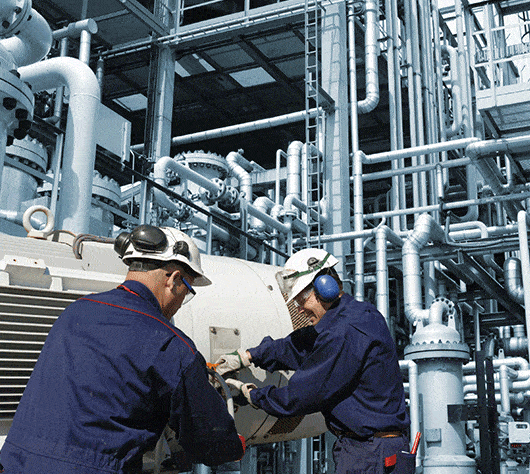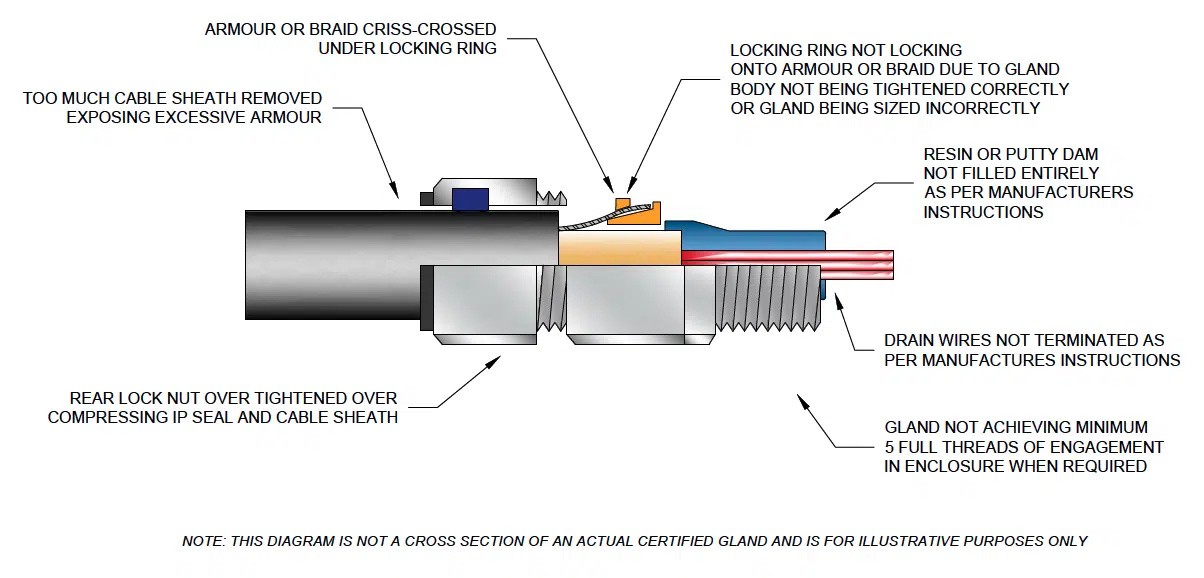9 Easy Facts About Roar Solutions Shown
Wiki Article
Some Known Details About Roar Solutions
Table of ContentsIndicators on Roar Solutions You Need To KnowThe Main Principles Of Roar Solutions See This Report on Roar Solutions
In order to protect installations from a prospective surge a technique of analysing and identifying a potentially dangerous location is needed. The function of this is to guarantee the right selection and installment of devices to ultimately protect against an explosion and to make certain safety of life.
(http://www.place123.net/place/roar-solutions-mackay-harbour-qld-australia)
No tools needs to be installed where the surface area temperature of the equipment is higher than the ignition temperature level of the provided danger. Below are some common dust hazardous and their minimum ignition temperature. Coal Dust 380C 225C Polythene 420C (thaws) Methyl Cellulose 420C 320C Starch 460C 435C Flour 490C 340C Sugar 490C 460C Grain Dust 510C 300C Phenolic Resin 530C > 450C Aluminium 590C > 450C PVC 700C > 450C Soot 810C 570C The possibility of the hazard existing in a focus high sufficient to trigger an ignition will vary from location to place.
In order to identify this risk an installment is separated into areas of threat depending upon the amount of time the hazardous is present. These locations are referred to as Areas. For gases and vapours and dirts and fibers there are 3 areas. Zone 0 Area 20 A harmful environment is extremely most likely to be present and may be present for long durations of time (> 1000 hours per year) and even continuously Zone 1 Area 21 A dangerous atmosphere is possible but not likely to be present for long durations of time (> 10 450 C [842 F] A category of T6 suggests the minimal ignition temperature is > 85 C [185 F] Dangerous location electric equipment maybe created for usage in greater ambient temperature levels. This would certainly showed on the score plate e.g. EExe II C T3 Ta + 60C( This means at 60C ambient T3 will not be surpassed) T1 T1, T2, T3, T4, T5, T6 T2 T2, T3, T4, T5, T6 T3 T3, T4, T5, T6 T4 T4, T5, T6 T5 T5, T6 T6 T6 A T Course rating of T1 means the maximum surface temperature created by the instrument at 40 C is 450 C. Presuming the connected T Class and Temperature ranking for the tools are ideal for the location, you can always utilize a tool with a much more strict Division score than needed for the area. There isn't a clear solution to this concern regrettably. It really does depend upon the sort of equipment and what repair work need to be executed. Devices with details examination treatments that can't be performed in the area in order to achieve/maintain 3rd event ranking. Have to come back to the manufacturing facility if it is before the equipment's solution. Area Repair Service By Authorised Personnel: Complicated screening may not be needed nevertheless certain treatments might require to be complied with in order for the devices to keep its 3rd party score. Authorised workers need to be employed to carry out the job correctly Repair work must be a like for like substitute. New part should be considered as a straight replacement calling for no special screening of the equipment after the fixing is total. Each piece of tools with a hazardous score must be evaluated individually. These are described at a high level listed below, however, for more thorough information, please refer directly to the guidelines.
All About Roar Solutions
The equipment register is a comprehensive data source of devices documents that includes a minimum set of areas to recognize each product's location, technical parameters, Ex-spouse classification, age, and environmental information. This information is critical for tracking and handling the equipment effectively within unsafe areas. In contrast, for regular or RBI sampling examinations, the grade will be a mix of In-depth and Close examinations. The proportion of Thorough to Close assessments will certainly be figured out by the Tools Risk, which is analyzed based on ignition threat (the possibility of a source of ignition versus the possibility of a flammable ambience )and the unsafe area classification( Area 0, 1, or 2). This variant will likewise influence the resourcing requirements for work preparation. Once Whole lots are specified, you can develop tasting strategies based on the sample size of each Whole lot, which refers to the variety of random devices items to be evaluated. To identify the called for sample size, two facets need to be assessed: the dimension of the Whole lot and the category of assessment, which shows the degree of initiative that should be applied( lowered, normal, or enhanced )to the examination of the Great deal. By incorporating the category of evaluation with the Whole lot dimension, you can after that establish the proper rejection requirements for an example, suggesting the allowable number of faulty items found within that sample. For even more information on this process, please describe the Power Institute Standards. The IEC 60079 basic suggests that the maximum period between examinations must not exceed three years. EEHA evaluations will also be conducted outside of RBI projects as component of arranged upkeep and tools overhauls or repairs. These inspections can be credited towards the RBI example sizes within the influenced Lots. EEHA evaluations are conducted to identify mistakes in electric equipment. A heavy scoring system is vital, as a solitary piece of equipment might have multiple mistakes, each with varying degrees of ignition risk. If the consolidated rating of both evaluations is less than twice the fault score, the Great deal is deemed appropriate. If the Lot is still taken into consideration unacceptable, it has to undertake a complete assessment or reason, which may trigger more stringent inspection protocols. Accepted Lot: The reasons for any kind of mistakes are identified. If a common failure setting is located, added equipment may require assessment and repair. Faults are identified by seriousness( Safety and security, Stability, Housekeeping ), ensuring that urgent issues are analyzed and attended to without delay to mitigate any impact on safety and security or operations. The EEHA data source need to track and record the lifecycle of mistakes together with the restorative activities taken. Carrying out a robust Risk-Based Examination( RBI )method is critical for ensuring conformity and safety in managing Electrical Tools in Hazardous Areas( EEHA) (eeha courses). Automated Mistake Rating and Lifecycle Management: Easily take care of faults and track their lifecycle to boost evaluation accuracy. The intro of this assistance for risk-based inspection additionally strengthens Inspectivity's position as a best-in-class solution for regulative compliance, along with for any kind of asset-centric examination use instance. If you want discovering more, we invite you to ask for a demonstration and find just how our solution can transform your EEHA monitoring processes.
The Main Principles Of Roar Solutions

In regards to explosive danger, an unsafe area is a setting in which an explosive ambience is present (or might be expected to be existing) in amounts that require special preventative measures for the building, installment and usage of devices. eeha certificate. In this post we check out the challenges faced in the office, the danger control procedures, and the called for competencies to function safely
These substances can, in specific conditions, create explosive atmospheres and these can have significant and terrible repercussions. Many of us are familiar with the fire triangular eliminate any kind of one of the this post three elements and the fire can not occur, but what does this mean in the context of hazardous locations?
In the majority of circumstances, we can do little regarding the levels of oxygen airborne, but we can have significant impact on resources of ignition, for instance electric devices. Hazardous locations are recorded on the harmful location classification drawing and are recognized on-site by the triangular "EX" sign. Here, among various other key information, areas are divided right into three types depending on the danger, the chance and duration that an eruptive ambience will certainly exist; Zone 0 or 20 is considered one of the most harmful and Zone 2 or 22 is deemed the least.
Report this wiki page